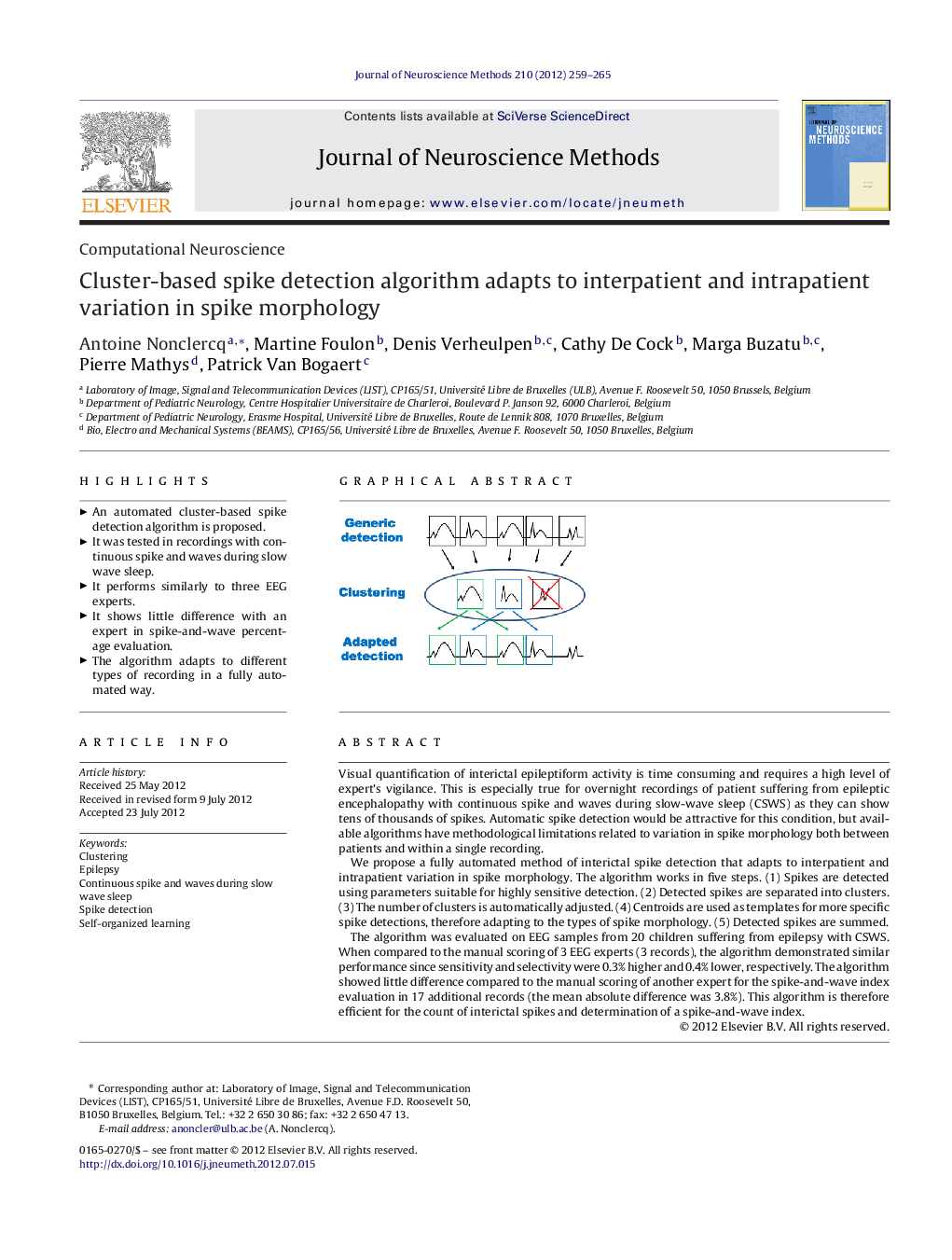| کد مقاله | کد نشریه | سال انتشار | مقاله انگلیسی | نسخه تمام متن |
|---|---|---|---|---|
| 6269577 | 1614651 | 2012 | 7 صفحه PDF | دانلود رایگان |

Visual quantification of interictal epileptiform activity is time consuming and requires a high level of expert's vigilance. This is especially true for overnight recordings of patient suffering from epileptic encephalopathy with continuous spike and waves during slow-wave sleep (CSWS) as they can show tens of thousands of spikes. Automatic spike detection would be attractive for this condition, but available algorithms have methodological limitations related to variation in spike morphology both between patients and within a single recording.We propose a fully automated method of interictal spike detection that adapts to interpatient and intrapatient variation in spike morphology. The algorithm works in five steps. (1) Spikes are detected using parameters suitable for highly sensitive detection. (2) Detected spikes are separated into clusters. (3) The number of clusters is automatically adjusted. (4) Centroids are used as templates for more specific spike detections, therefore adapting to the types of spike morphology. (5) Detected spikes are summed.The algorithm was evaluated on EEG samples from 20 children suffering from epilepsy with CSWS. When compared to the manual scoring of 3 EEG experts (3 records), the algorithm demonstrated similar performance since sensitivity and selectivity were 0.3% higher and 0.4% lower, respectively. The algorithm showed little difference compared to the manual scoring of another expert for the spike-and-wave index evaluation in 17 additional records (the mean absolute difference was 3.8%). This algorithm is therefore efficient for the count of interictal spikes and determination of a spike-and-wave index.
Highlights⺠An automated cluster-based spike detection algorithm is proposed. ⺠It was tested in recordings with continuous spike and waves during slow wave sleep. ⺠It performs similarly to three EEG experts. ⺠It shows little difference with an expert in spike-and-wave percentage evaluation. ⺠The algorithm adapts to different types of recording in a fully automated way.
Journal: Journal of Neuroscience Methods - Volume 210, Issue 2, 30 September 2012, Pages 259-265